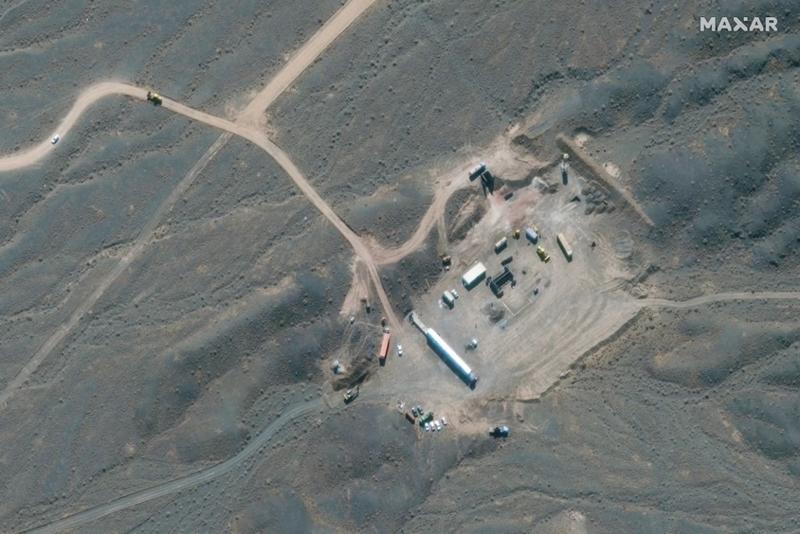 This handout satellite image provided by Maxar Technologies on Jan 8, 2020 shows an overview of Iran's Natanz nuclear facility, south of the capital Tehran. (SATELLITE IMAGE ©2021 MAXAR TECHNOLOGIES / AFP)
This handout satellite image provided by Maxar Technologies on Jan 8, 2020 shows an overview of Iran's Natanz nuclear facility, south of the capital Tehran. (SATELLITE IMAGE ©2021 MAXAR TECHNOLOGIES / AFP)
VIENNA - Iran has deepened a key breach of its 2015 nuclear deal, enriching uranium with a larger number of advanced centrifuge machines in an underground plant as it faces off with the new US administration on salvaging the accord.
Tehran has recently accelerated its breaches of the deal, raising pressure on US President Joe Biden as both sides say they are willing to come back into compliance with the badly eroded agreement if the other side moves first.
READ MORE: Iran's foreign minister hints at way to bridge nuke deal impasse
Iran began its breaches in 2019 in response to Washington’s withdrawal in 2018 under then-president Donald Trump and the reimposition of US economic sanctions against Tehran that were lifted under the deal.
Israel’s energy minister said it would now take Iran about six months to produce enough fissile material for one nuclear weapon, a timeline almost twice as long as that anticipated by a senior Biden administration official
The accord says Iran can refine uranium only at its main enrichment site - an underground plant at Natanz - with first-generation IR-1 centrifuges. Last year Iran began enriching there with a cascade, or cluster, of much more efficient IR-2m machines and in December said it would install three more.
“Iran has completed the installation of one of these three cascades, containing 174 IR-2m centrifuges, and, on 30 January 2021, Iran began feeding the cascade with UF6,” the International Atomic Energy Agency said in a report obtained by Reuters on Tuesday, referring to uranium hexafluoride feedstock.
The IAEA later confirmed that the Islamic Republic had started enriching with the second cascade.
Tehran is also pressing ahead with the installation of more advanced centrifuges, the report indicated. Of the remaining two cascades of IR-2m machines, installation of one had begun while the other’s installation was “nearing completion”, it said.
ALSO READ: Iran 'won't reverse nuclear steps' before US sanctions are lifted
Iran’s ambassador to the IAEA, Kazem Gharibabadi, said on Twitter Tehran had also started installing IR-6 centrifuges at Fordow, a site dug into a mountain where Iran has begun enriching uranium to the 20 percent purity it last achieved before the 2015 deal. The IAEA report made no mention of that.
Earlier on Tuesday Israel’s energy minister said it would now take Iran about six months to produce enough fissile material for one nuclear weapon, a timeline almost twice as long as that anticipated by a senior Biden administration official.
Iran denies any intent to weaponize enrichment. The nuclear deal sets a limit of 3.67 percent enrichment purity, suitable for producing civilian nuclear energy and far below the 90 percent that is weapons-grade.


